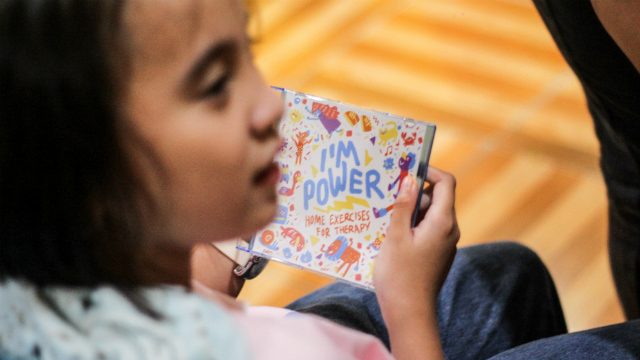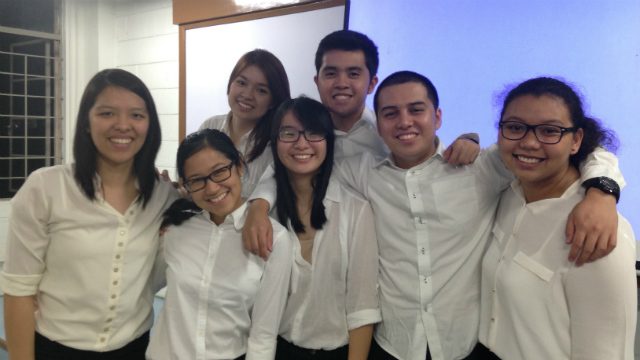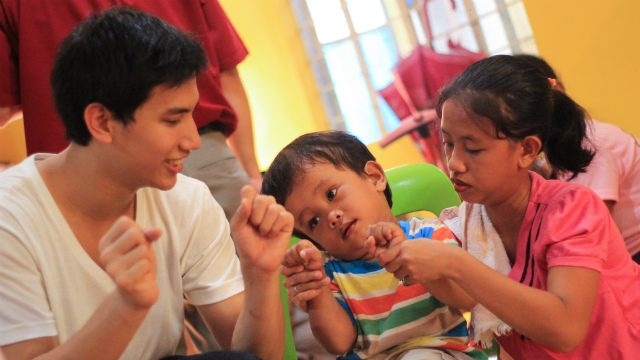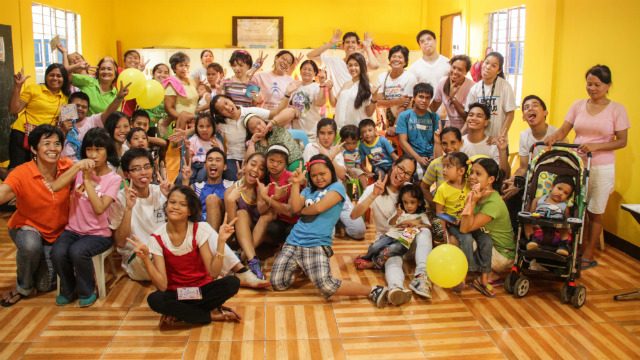SUMMARY
This is AI generated summarization, which may have errors. For context, always refer to the full article.

MANILA, Philippines – While most people encourage children to go out and play, Nanay Emily* was often asked why she brings her child out of the house.
Gina*, Nanay Emily’s 11-year-old daughter, was diagnosed with cerebral palsy, a broad term used to describe disorders that impair control of movement due to brain damage.
“Maraming nagtatanong sa akin kung bakit [ko] pa rin siya nilalabas,” said Nanay Emily. “Ang sagot ko sa kanila, higit na dapat ko siyang ilabas dahil sa kondisyon niya, para makita nila na kaya rin niya ang ginagawa ng iba.”
(Many people ask me why I bring her out. I answer them that her condition only makes it even more important for me to bring her out, so they could see that my daughter can also do what others can.)
Gina is aware of what other people are saying about her. “Naaawa ako kay Mama, kasi hirap na hirap siya sa akin tapos ang dami pang mga tao sa labas na pinag-uusapan siya… kami.”
(I feel sorry for Mama, because she’s having difficulty taking care of me and yet people outside talk about her… about us.)
This was a conversation that incoming medical school students Joyce Tiam-Lee and Adie Sison recalled from a community visit their class group did when they were still juniors at the Ateneo de Manila University.
At the time, the 7-member group of Health Sciences students were tasked to use human-centered design principles to address a health problem they could identify in the Community-Based Rehabilitation-Samahan ng mga Magulang na Iniingatan ang Lahat ng Batang Espesyal (CBR-SMILE) center in Bicol Street, Payatas Road, Quezon City.
Tiam-Lee said that the group, composed of Sison, Arlyze Arenas, Ramon Cajucom, Hannah Cua, Ariza Francisco, Gab Tangco, and herself, learned in college that health issues are not just confined to deficiencies in the medical field nor the biological makeup of a person.

“[They] are actually a product of a myriad of social factors such as poverty and inequity, environmental degradation, social-cultural biases, and political challenges,” she said. (READ: PH education and health lagging behind ASEAN nations)
Tiam-Lee said that their Global Health and Innovations class showed them how traditional responses to health problems tend to become inefficient and ineffective under such circumstances. (READ: World Bank: 400M still lack access to key health care services)
Sison added, “We shouldn’t forget that persons with disabilities are still humans who have the same rights as us. Unfortunately, a lot of opportunities are taken away from them simply because of their condition, which should not be the case.” (WATCH: Football players with cerebral palsy)
This prompted them to come up with a “fresh” and “innovative” approach to address the problems confronted by children with cerebral palsy in CBR-SMILE.
The I’mPOWER project was thus born.
I’mPOWER to empower

I’mPOWER stands for Program on Wellness, Empowerment, and Rehabilitation. According to Tiam-Lee, it uses dance movement therapy as rehabilitation intervention for children with cerebral palsy.
The program provides step-by-step dance-along videos that integrates physical therapy methods into dance movements the children can associate with day-to-day functions.
The group was able to create these videos through the help of the Company of Ateneo Dancers (CADS) and in consultation with physical therapist Caseyline Navarro and their class adviser, Dr John Wong.

“The outcome we wanted to achieve was simple – we wanted these kids to be able to perform activities of daily living, so that they may be empowered to be productive members of society,” Tiam-Lee said.
Six months after implementing the I’mPOWER program, Tiam-Lee said they noted an improvement in the range of motion (ROM) of the children’s upper and lower extremities.
“Our results show that there was a 65% increase in ROM of the children compared to baselines,” she said, adding that the program also made it easier for the kids to perform day-to-day functions like going up and down the stairs, using utensils, and cleaning up after themselves.
“Moreover, the parents mentioned that their children enjoyed the dance and saw it as an avenue for play and fun,” said Tiam-Lee.
More help needed
 However, Tiam-Lee said they encountered more challenges as well.
However, Tiam-Lee said they encountered more challenges as well.
“First, there was difficulty doing the dance therapy for those who had severe cases of cerebral palsy to the point of being bedridden. Second, we did not anticipate how some of the families would not have electricity for months on end, nor the equipment to play the video CDs. Third, the center is undergoing renovation, so a lot of those receiving therapy could only rely on these dance videos,” she shared.
Moreover, the group members are all heading to medical school this year, which means they are in the process of turning over the I’mPOWER program to the community.
They then started a crowdfunding campaign through the Indiegogo website last month, where Tiam-Lee said they aim to raise at least US$3,000 or about P130,000 so CBR-SMILE will be able to run the I’mPOWER program on its own.
The money will be used to produce more dance videos, purchase portable DVD players that participating families can borrow from the center, and to help in the ongoing renovation of CBR-SMILE.
“Anything beyond the said amount will be used to purchase rehabilitation equipment and as an investment for a possible cardboard furniture social enterprise being discussed by the community,” she said.
Tiam-Lee’s group needs more help, however. Their crowdfunding campaign ends this month, and they are still far from their goal.
However, the group will still accept donations through their bank account:
| Bank Account Details |
|
Account Name: Arlyze Gaile D Arenas Peso Savings Account No: 001050193073 Branch: Mayon, Quezon City |
Tiam-Lee said that other forms of help, like technical expertise on dance therapy and donations in kind, are welcome. Their group also encourages more people to share their story – and that of the kids in CBR-SMILE – to the rest of the world.
Tiam-Lee added, “Our biggest insight from doing this project is that human-centered design is a continuous process of co-creation and being open to the encounter – with the ultimate goal of promoting human dignity.” – Rappler.com
If you have more questions for the group members, you may reach them through theimpowerproject@gmail.com or 0917-722-3810.
Have a similar story to share? Send us an email at move.ph@rappler.com. Sign-up here as well to be part of the Move community.
*Names changed to protect their identities.
Add a comment
How does this make you feel?
There are no comments yet. Add your comment to start the conversation.